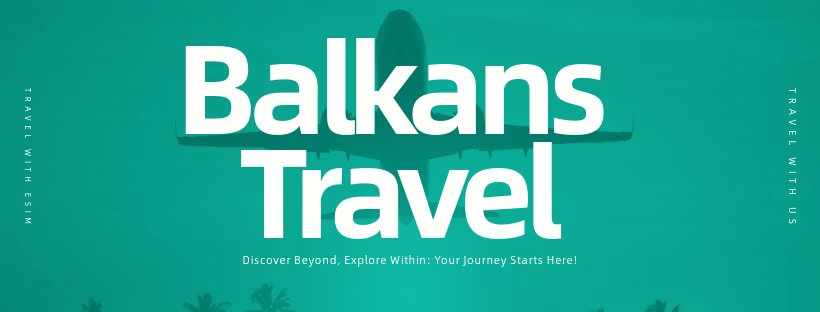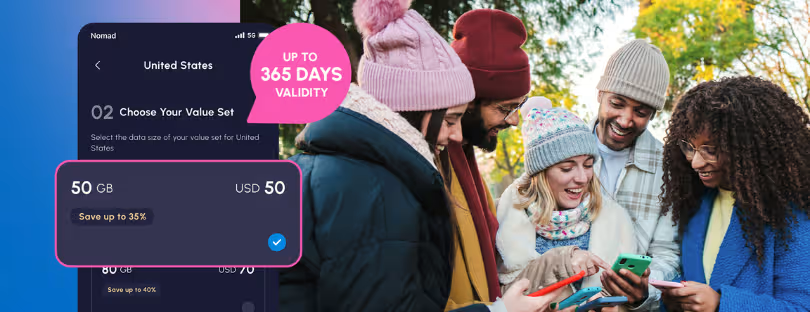
How Using an eSIM Helped Me Cut Costs While Traveling in the Balkans
If you’ve ever traveled through the Balkans—Serbia, Montenegro, Croatia, Albania, North Macedonia, Greece, and the like—you probably know that staying connected can be both a logistical and financial headache. I love exploring this stunning region, but let’s be honest: juggling multiple SIM cards, finding local plans, and avoiding roaming fees can really take the shine off the experience. That’s why, during my last travel, to the Balkans, I decided to try something different: I used an eSIM.
Spoiler alert—it was a game-changer. Not only did I stay connected seamlessly across multiple countries, but I also saved a ton of money. Let me walk you through my Balkans travel experience, the costs I avoided, and how eSIMs can simplify your travel while keeping your budget in check.
What’s an eSIM, and Why Should You Care?
Before I dive into my Balkan adventures, let me quickly explain what an eSIM is. An eSIM (embedded SIM) is a digital SIM card that’s already built into your phone. Instead of physically swapping SIM cards every time you visit a new country, you can download a plan digitally and activate it instantly. No more fumbling with tiny plastic chips or standing in line at a kiosk in a foreign airport.
Now, you might be thinking, “That sounds fancy, but isn’t it expensive?” Trust me, it’s not. In fact, using an eSIM saved me from a lot of unnecessary expenses and stress.
Balkans Travel Challenges (And How eSIMs Solved Them)
Traveling through the Balkans comes with its own set of challenges when it comes to connectivity. Here are a few common hurdles I encountered in previous trips (pre-eSIM) and how this time was completely different.
1. The Border Problem
The Balkans are a collection of small countries with distinct borders, and crossing them often means losing your mobile signal or incurring hefty roaming fees. For instance, driving from Montenegro to Albania, I’d previously racked up surprise charges because my roaming settings weren’t configured correctly. Even local SIM cards from one country were useless the moment I crossed into another.
How the eSIM Helped:
With the eSIM, I bought a regional data plan that covered multiple Balkan countries. As soon as I crossed a border, my connection automatically switched to the local network, with no interruptions or extra fees. It was seamless—and my wallet thanked me.
2. Hunting for Local SIM Cards
If you’ve ever landed in a foreign country and had to find a SIM card, you know it’s not always straightforward. Language barriers, varying plan structures, and the occasional out-of-stock situation can make it frustrating. Plus, many plans require a local ID or address, which isn’t exactly tourist-friendly.
How the eSIM Helped:
Before my trip, I downloaded an eSIM plan through an app while sipping coffee at home. I chose a package that suited my needs (20GB with calls for about €20) and activated it the moment my plane touched down in Sarajevo. No waiting in lines, no deciphering foreign websites, no stress.
3. Overpriced Roaming Fees
Roaming charges are the bane of any traveler’s existence. On my first-ever travel to the Balkans, I left my data roaming on for a few hours in Bosnia, and my bill the next month was enough to fund a week’s worth of travel. Never again.
How the eSIM helped:
The beauty of eSIMs is that they’re transparent about costs. The app showed me exactly what I’d pay for data in each country, and the rates were a fraction of what I would have paid through my home carrier. For example, my carrier charges €10/day for roaming, but my eSIM costs about €20 for an entire 2 weeks of data across multiple countries. Big difference, right?
4. Staying Connected in Remote Areas
The Balkans have some incredibly remote areas—think the mountains of Montenegro or the rural villages of Bosnia. In the past, I’ve struggled to find reliable network coverage with local SIM cards that prioritize urban areas.
How the eSIM Helped:
The eSIM plan I chose worked with multiple network providers in each country. This meant that even in remote spots, my phone automatically connected to the strongest available signal. Whether I was hiking through Durmitor National Park or cruising along Lake Ohrid, I stayed connected the entire time.
Breaking Down the Costs
Now, let’s talk numbers. Here’s how the costs added up (or, more importantly, didn’t add up) during my trip.
| Expense | Traditional SIMs/Roaming | eSIM |
|---|---|---|
| SIM Cards (4 countries) | €10–15 each (~€50 total) | €20 (regional plan) |
| Roaming Fees (per day) | €10/day x 10 days = €100 | Included |
| Time Spent (finding SIMs) | ~2 hours total | 0 hours |
| Total Cost | ~€150 (plus hassle) | €20 |
As you can see, the savings were significant. But beyond the money, what I really valued was the convenience. I didn’t waste a single minute hunting for SIM cards or worrying about unexpected fees. My eSIM handled everything automatically.
Practical Tips for Using an eSIM in the Balkans
If you’re considering using an eSIM for your next Balkan adventure, here are a few tips to make the most of it:
- Check Your Phone Compatibility:
Not all phones support eSIMs, so make sure yours does. Most newer models, like iPhones (XR and later) and some Android devices, have eSIM functionality. - Choose the Right Plan:
Look for a regional plan that covers all the countries you plan to visit. This one is the best affordable Balkan-specific package, which includes all Balkan countries, 20 GB of data, and voice services. - Download Before You Go:
Install the eSIM and test it before your trip. This ensures you won’t face any surprises when you land. - Use Offline Maps and Apps:
While eSIMs provide plenty of data, it’s always a good idea to download offline maps or travel guides in case you lose signal in especially remote areas. - Turn Off Unnecessary Apps:
To maximize your data, disable background data usage for apps you don’t need while traveling.
My Favorite Balkans Travel Moments, Powered by eSIM
Because I wasn’t stressed about connectivity, I could fully immerse myself in the beauty of the Balkans. Here are a few highlights from my trip that the eSIM made possible:
- Navigating the Old Towns:
From Dubrovnik’s cobbled streets to Kotor’s walled city, having reliable Google Maps meant I never got lost. - Sharing Real-Time Updates:
I loved being able to share photos of Lake Bled and Plitvice Lakes in real-time with friends and family. - Booking on the Fly:
Whether it was snagging a last-minute Airbnb in Skopje or checking bus schedules in Sarande, the eSIM gave me the freedom to plan as I went.
Final Thoughts: Why I’ll Never Travel Without an eSIM Again
The Balkans stole my heart, but eSIMs stole the stress out of staying connected. For just a fraction of what I would have spent on roaming fees or local SIM cards, I got reliable, hassle-free connectivity that followed me across borders and remote landscapes.
If you’re planning a trip to this stunning region (or anywhere else, really), I can’t recommend eSIMs enough. They’re cost-effective, convenient, and the perfect travel companion for anyone who wants to focus on exploring—not worrying about their phone bill.
So, are you ready to make the switch? Let me know how it works for you on your next adventure!










